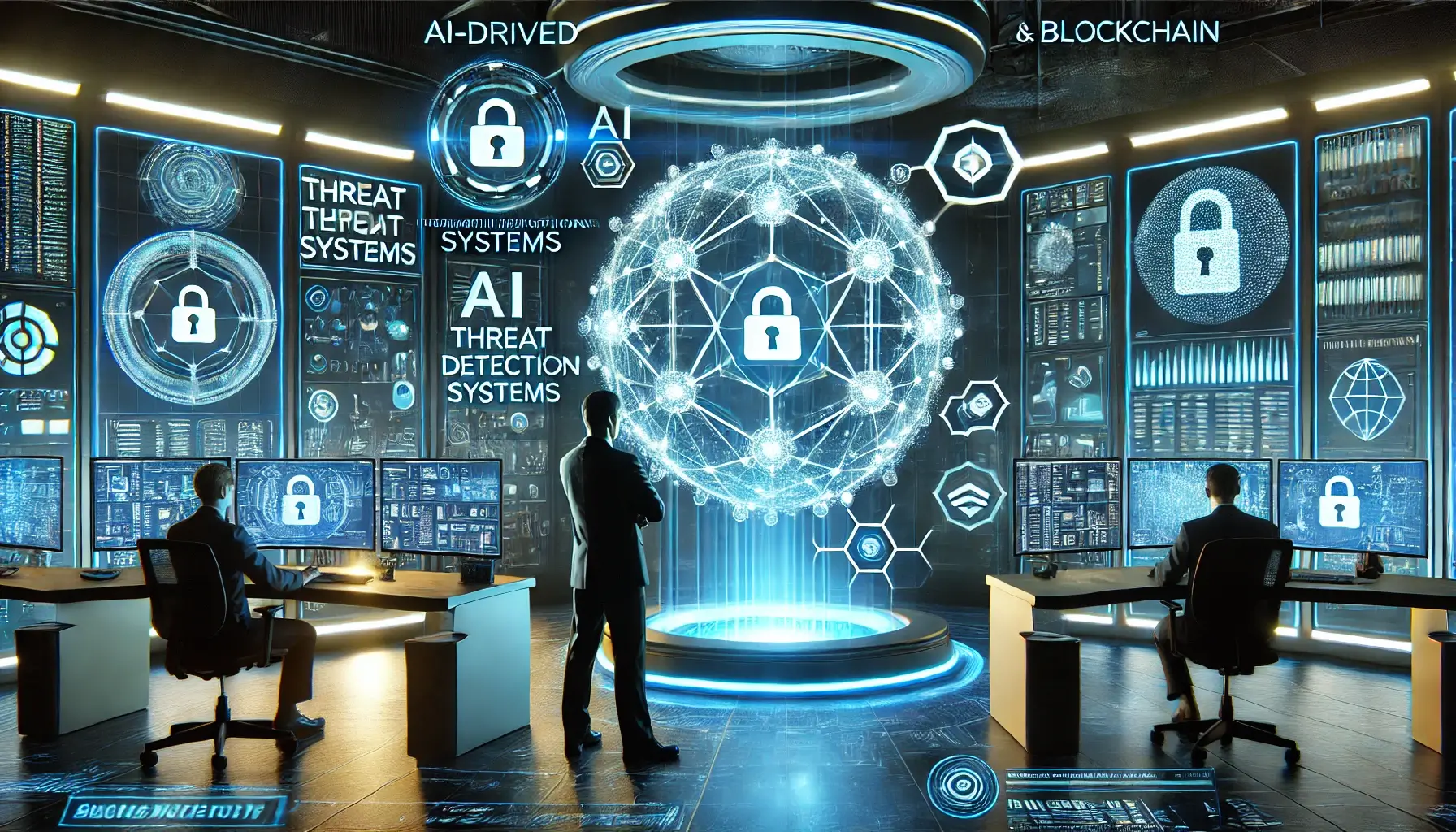-
How Digital Nomads Are Redefining Work and Lifestyle 🌍💻
Mar 06, 2025 | 39 Comments -
How Artificial Intelligence is Transforming Healthcare 🏥🤖
Mar 06, 2025 | 0 Comments -
How Cryptocurrency is Reshaping the Global Economy 💰🌍
Mar 06, 2025 | 0 Comments -
How to Build a Strong Personal Brand: Stand Out & Grow Your Influence 🚀📢
Mar 02, 2025 | 0 Comments -
The Power of AI in Business: How Artificial Intelligence is Transforming Industries 🚀🤖
Mar 02, 2025 | 0 Comments -
How Smart Homes Are Changing the Way We Live 🏡🔋
Mar 02, 2025 | 0 Comments -
How Electric Vehicles Are Revolutionizing Transportation 🚗⚡
Mar 02, 2025 | 0 Comments -
The Future of Renewable Energy: How Green Technology is Changing the World 🌍⚡
Mar 02, 2025 | 0 Comments

The Future of Cybersecurity: How AI and Blockchain Are Protecting Digital Assets
As cyber threats become more sophisticated, cybersecurity is evolving with artificial intelligence (AI) and blockchain technology to protect digital assets. With increasing cyberattacks on businesses, governments, and individuals, the future of cybersecurity depends on intelligent automation, decentralized security models, and proactive defense mechanisms.
The Growing Threat of Cybercrime
Cybercrime is projected to cost the global economy trillions of dollars annually. Ransomware attacks, phishing scams, and data breaches are rising, making cybersecurity an essential investment for organizations and individuals alike.
Key Technologies Transforming Cybersecurity
AI, blockchain, and next-generation encryption are reshaping digital security.
1. Artificial Intelligence in Cybersecurity
AI-driven security systems detect and respond to cyber threats faster than traditional methods.
- AI identifies unusual network activity and prevents attacks.
- Machine learning improves malware detection and response.
- Automated security analysis reduces the need for manual monitoring.
2. Blockchain for Secure Transactions
Blockchain enhances cybersecurity by creating tamper-proof digital records.
- Decentralized ledgers prevent data breaches.
- Smart contracts automate secure transactions.
- Blockchain verifies user identities without exposing sensitive data.
3. Zero Trust Security Model
The Zero Trust model requires strict identity verification for all network access.
- Multi-factor authentication strengthens login security.
- Access controls restrict unauthorized users.
- AI continuously monitors network behavior for threats.
AI-Powered Threat Detection
AI enhances cybersecurity by analyzing vast amounts of data to detect threats in real time.
1. Predictive Threat Intelligence
AI predicts cyberattacks before they occur.
- Machine learning analyzes attack patterns to prevent future breaches.
- AI detects phishing scams and fraudulent activities.
- Automated response systems neutralize threats instantly.
2. AI in Ransomware Protection
AI helps organizations prevent and mitigate ransomware attacks.
- AI detects ransomware encryption attempts in real time.
- Automated backups restore compromised systems instantly.
- Behavioral analysis prevents unauthorized data access.
3. AI in Identity and Access Management (IAM)
AI improves identity verification and user authentication.
- AI-powered biometrics enhance security for online transactions.
- AI analyzes login behavior to prevent unauthorized access.
- Facial recognition and voice authentication replace passwords.
Blockchain Security and Decentralized Protection
Blockchain provides secure, decentralized data protection.
1. Decentralized Identity Management
Blockchain secures personal identity verification.
- Self-sovereign identity solutions protect user data.
- Users control access to their personal information.
- Blockchain eliminates reliance on centralized databases.
2. Secure Data Storage and Encryption
Blockchain enhances data security with cryptographic encryption.
- Data is stored in decentralized networks, reducing hacking risks.
- Blockchain records cannot be altered or deleted.
- End-to-end encryption protects digital communications.
3. Blockchain-Powered Cybersecurity Solutions
Companies are integrating blockchain for enhanced security.
- Blockchain prevents Distributed Denial-of-Service (DDoS) attacks.
- Supply chain security improves with tamper-proof blockchain records.
- Financial transactions become safer with blockchain-based encryption.
Cybersecurity Challenges in the Future
Despite advancements, cybersecurity faces ongoing challenges.
- AI-Driven Cyber Attacks: Hackers are using AI to create more sophisticated threats.
- Data Privacy Concerns: Companies must comply with stricter privacy regulations.
- Quantum Computing Risks: Quantum computers may break current encryption methods.
- Human Error: Social engineering and phishing attacks target users, not systems.
Future Trends in Cybersecurity
The next decade will see continuous innovations in digital security.
1. AI-Driven Automated Security
AI will autonomously detect and eliminate threats.
- AI-powered security bots respond to cyber threats instantly.
- Self-learning algorithms improve security without human intervention.
- Automated vulnerability testing strengthens networks.
2. Quantum-Resistant Encryption
Cybersecurity experts are developing encryption methods resistant to quantum computing threats.
- Post-quantum cryptography protects against decryption risks.
- Quantum key distribution (QKD) enhances secure communications.
- Companies are testing quantum-safe cryptographic protocols.
3. Global Cybersecurity Regulations
Governments are strengthening cybersecurity laws and compliance.
- GDPR and CCPA impose stricter data protection rules.
- Companies must adopt AI-powered security solutions.
- International cybersecurity frameworks promote cross-border cooperation.
Conclusion
Cybersecurity is evolving rapidly, with AI and blockchain playing critical roles in digital protection. As cyber threats become more sophisticated, proactive security measures, decentralized solutions, and AI-driven threat detection will be essential. Businesses and individuals must embrace emerging cybersecurity technologies to safeguard their digital assets in an increasingly connected world.
0 comments
No comments yet. Be the first to comment!
Your comment